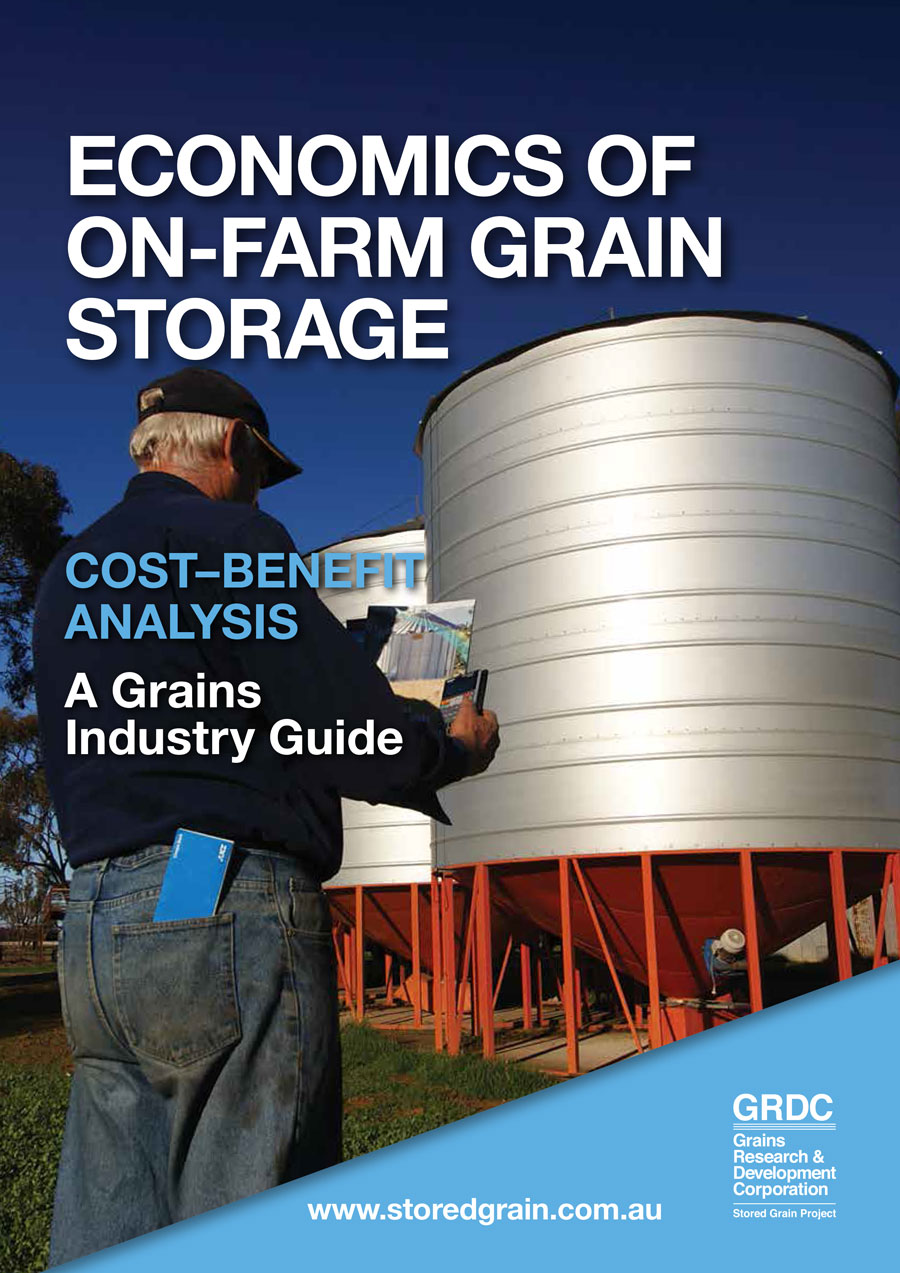Economics of on-farm grain storage: A Grains Industry Guide

As growers continue to expand on-farm grain storage, the question of economic viability gains significance. There are many examples of growers investing in on-farm grain storage and paying for it in one or two years because they struck the market at the right time, but are these examples enough to justify greater expansion of on-farm grain storage?
To make a sound financial decision, we need to compare the expected returns from grain storage vs expected returns from other farm business investments, such as more land, a chaser bin, a wider boomspray, a second truck or paying off debt. Calculating the costs and benefits of on-farm storage will enable a return-on-investment (ROI) figure, which can be compared with other investment choices.
Using the template on page 6, a cost-benefit calculation can be done to compare different storage types or varying storage scenarios. For example, the four option columns could be used to compare silos to bunkers or compare varying combinations of planned benefits. More templates can be downloaded and printed by visiting www.storedgrain.com.au
The key to a useful cost–benefit analysis is identifying which financial benefits to plan for and costing an appropriate storage to suit that plan. To compare the benefits and costs in the same form, work everything out on a basis of dollars per tonne ($/t). It is also helpful to reality check each figure as we go – ask ourselves if the number we’re entering is realistic. Don’t get caught up on figures that need to be estimated – we could debate all day on what the grain market is going to do. A more productive approach is to use averages based on medium-term to long-term trends.
Want to link to this publication?
Use www.grdc.com.au/GRDC-Guide-OnFarmStorageEconomics to ensure your link remains current and up-to-date!
Region National, North, South, West
- 1.20 mb Economics of on-farm grain storage: A Grains Industry Guide Contents include: Seasonal price variations; Introduction; Financial benefits; Calculation template (pull-out section); Fixed costs of on-farm storage; Variable costs of on-farm storage; The analysis; and Useful resources
- 73.01 kb Grain Storage Cost-benefit template This printable A4 template is extracted from Economics of on-farm grain storage: A Grains Industry Guide. Using this template, a cost–benefit calculation can be done to compare different storage types or varying storage scenarios.
Was this page helpful?
YOUR FEEDBACK
